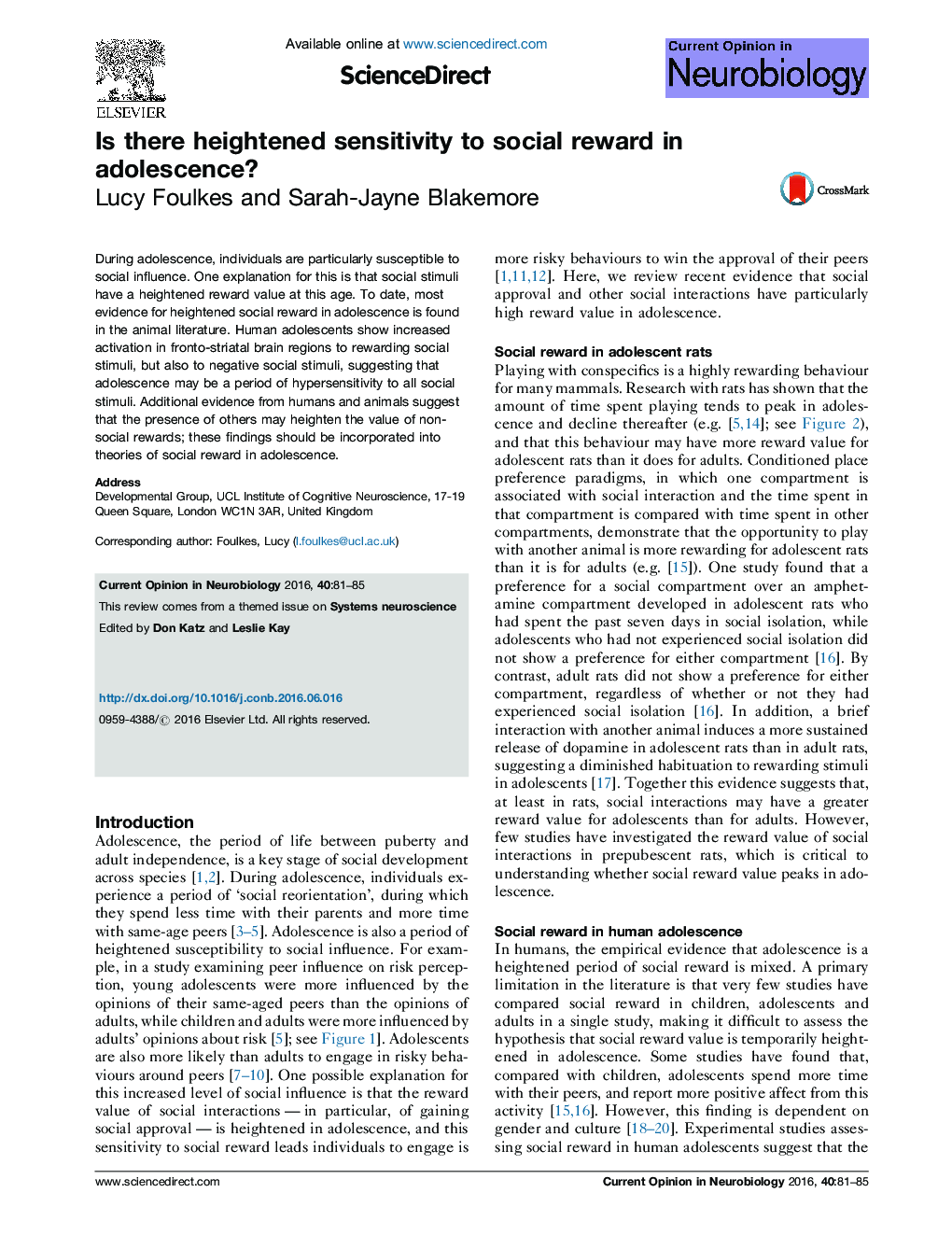| Article ID | Journal | Published Year | Pages | File Type |
|---|---|---|---|---|
| 6266053 | Current Opinion in Neurobiology | 2016 | 5 Pages |
Abstract
During adolescence, individuals are particularly susceptible to social influence. One explanation for this is that social stimuli have a heightened reward value at this age. To date, most evidence for heightened social reward in adolescence is found in the animal literature. Human adolescents show increased activation in fronto-striatal brain regions to rewarding social stimuli, but also to negative social stimuli, suggesting that adolescence may be a period of hypersensitivity to all social stimuli. Additional evidence from humans and animals suggest that the presence of others may heighten the value of non-social rewards; these findings should be incorporated into theories of social reward in adolescence.
Related Topics
Life Sciences
Neuroscience
Neuroscience (General)
Authors
Lucy Foulkes, Sarah-Jayne Blakemore,
